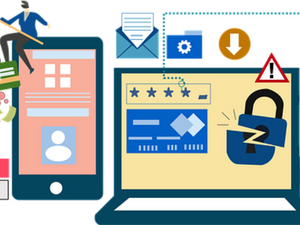 Credential stuffing is just one of many cyberattacks that are on the rise. This automated, low-risk method is low-cost and low-risk. It uses bots for username-password combinations derived from previous data breaches. The information is then used to exfiltrate data to a new target system. It is based on the fact that people often reuse the same login credentials across multiple sites.
Credential stuffing is just one of many cyberattacks that are on the rise. This automated, low-risk method is low-cost and low-risk. It uses bots for username-password combinations derived from previous data breaches. The information is then used to exfiltrate data to a new target system. It is based on the fact that people often reuse the same login credentials across multiple sites.
Chick-fil A is the latest victim of a credential stuffing scheme. This shows that even large corporations are not immune to these malicious attempts. This article will provide you with all the information you need about the incident to help you stay informed.
The Chick-fil A Credential Stuffing Attack Timeline
Just before the holiday season last year, Chick-fil A became aware of the credential stuffing attack. They were notified about user accounts that were stolen and being sold online. These accounts cost between $20 and $200. If the accounts contained high-rewards and payment information, their price would increase.
Chick-fil-A found out that several automated attacks had occurred. These attacks occurred over a period of months between Dec. 18, 2022 and Feb. 12, 20,23. Threat actors targeted the website and mobile app of the fast-food company. They eventually gained access to Chick-fil A One accounts' user information. A notification letter was sent by Chick-fil-A One to all affected customers.
The Chick-fil A Credential Stuffing Attack: Consequences
Over 71,000 people were affected by the Chick-fil A credential stuffing attack. Names, email addresses, and debit and credit card numbers were all compromised. Chickfil-A One credit and membership information was also accessed by the threat actors. There might be more information about some customers. These are the people who have saved their phone numbers, home addresses, and birthdays.
Chick-fil A urged affected persons to change passwords and remove payment information. The company took further precautions by freezing current balances and recovered funds.
The bottom line
Data breaches are a serious problem, as demonstrated by the Chick-fil A credential stuffing scandal. You can also lose customers' trust and risk losing sensitive information. Data protection is a must for business owners. This will allow you to preserve your brand's reputation, and gain the support of your customers.
How to protect your organization from callback Phishing
 Callback Phishing scams are among the most serious cyberattacks. It can be devastating for individuals. It is worse if it occurs to your company. Here's a guide that will help you understand how callback Phishing works and what steps to take to stop it from happening in your organization.
Callback Phishing scams are among the most serious cyberattacks. It can be devastating for individuals. It is worse if it occurs to your company. Here's a guide that will help you understand how callback Phishing works and what steps to take to stop it from happening in your organization.
What is Callback Phishing?
A callback phishing attack typically begins with the victim receiving an e-mail. The email will usually state that the victim has already been charged or that payment is due.
This will anger or confuse the recipient and cause them to call the number in the email. Threat actors will answer the call pretending to cancel the fake subscription. They don't realize they have installed malware on their computer. This gives the threat actor access their sensitive information.
How to Protect Your Data From Callback Phishing
Your organization will suffer irreparable harm if a successful callback phishing attack is carried out. These campaigns can cause irreparable damage to your organization. Here are some ways you can protect your sensitive data.
Watch out for telltale signs of phishing
Callback Phishing emails don't usually contain malicious attachments or links to appear more believable. There are still signs that distinguish them from regular email. Emails from "legitimate companies" that do not have a business address should be avoided. Trustworthy companies will invest in a brand-named email address.
You should also be aware of spelling and grammar errors. No legitimate company would send out unprofessional-sounding emails to their valued customers. Be suspicious of emails that claim you have only a few hours to complete a task.
Emails that ask for login credentials or money should be avoided. It is even more suspicious when the email does not contain information beyond a customer service number.
Tighten Your Email Security
It doesn't matter how vigilant you are about callback phishing emails. However, extra security is always a good idea. Email security is one of your best options to protect your company.
These powerful tools can detect and block phishing and other email scams. These tools can also detect suspicious activity and prevent malware from being installed on your computer. There are many email software options available. You can choose the one that suits your security and budget best.
Training Your Employees
Human error is the key to the success of a callback-phishing attack. A single mistake by an employee could cost your entire company. Employee training is essential. Your staff should be taught how to spot suspicious email and the dangers associated with callback phishing attacks.
The bottom line
Callback phishing attacks should not be taken lightly by business owners. Negligence can lead to the theft of intellectual property or critical data. This will not only disrupt your business, but also affect your reputation. Keep your business safe by being vigilant and encouraging awareness among employees.
Integrated Technology Systems has the tools you need to prevent cyberattacks. They will train your employees on what to look for and how to handle suspicious emails. Contact us today to see how we can help.
Integrated Technology Systems
6 East 45th Street, Suite 400
New York, NY 10017
212-750-5420
https://www.itsnyc.com



